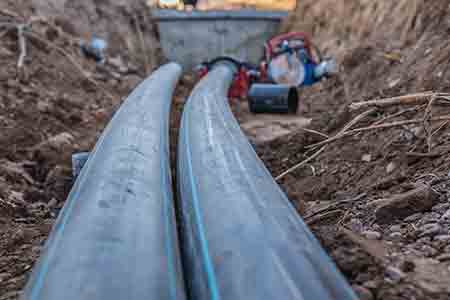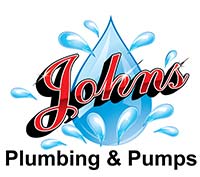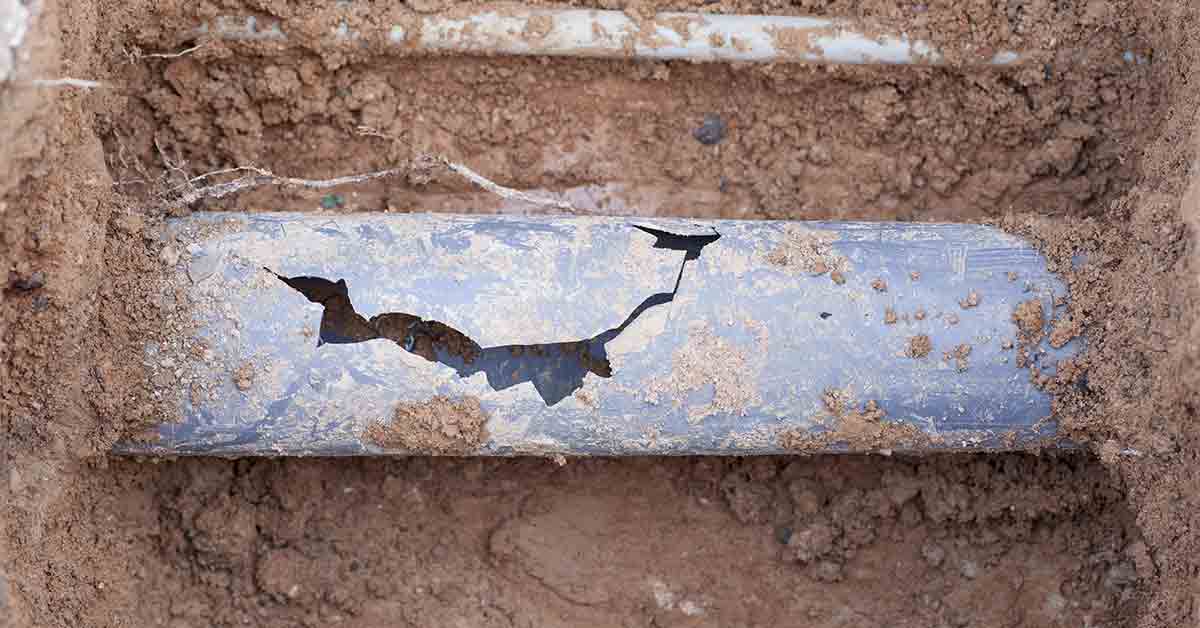What’s a Sewer Line?
The most critical piece of plumbing in any home is the main sewer line. The sewer line is the pipe that connects the house’s plumbing to the city’s plumbing infrastructure. Homeowners are responsible for the functionality of their sewer line. Since the pipe is underground, it’s easy to ignore problems until they consume both time and money. However, if homeowners suspect any issues with their main sewer line, they should contact a professional plumber trained to work on sewer lines.
Common Causes of Sewer Line Clogs
Nearly everyone has run into a clogged drain at some point. A single clog can be annoying, but what happens if every drain in the home backs up or is slow to drain? If standard drain clearing efforts don’t work, a sewer drain clog could be the culprit. Here are some signs that the sewer line needs to be repaired or replaced.
Pipe Damage
If pipes break, sewage cannot correctly drain through the plumbing system. Broken and damaged sewer pipes can lead to frequent backups. The use of heavy construction equipment above ground can cause the soil to shift and settle differently, resulting in the rupture of a sewer pipe. Corrosion can also lead to a collapsed or broken sewer pipe. Leaking or improperly sealed joints between pipes also leads to improper draining. If sewer line pipe damage is suspected, it’s essential to have a professional address the problem right away.
Tree Roots
Some older sewer line systems are made of clay or other porous materials. Additionally, before PVC pipes, connections between pipes were not as tight. As trees and other plants grow, their roots search for sources of water. If the roots locate a sewer pipe, they will grow into the pipe to reach the water. Over time, growing roots can cause the sewer line to break.
Flushing the Wrong Things Down the Toilet
Homeowners should ensure that they are only flushing human waste and toilet paper down the toilet. Flushing feminine hygiene products, paper towels, and other products down the toilet often leads to a clogged sewer drain. Sewer line issues can be costly. It’s best to make sure that everyone in the household understands what can and can’t go down the toilet before any problems arise.
Pouring Grease Down the Sink
Never pour grease, oil, or another form of fat down the drain. While many people believe that pouring hot water down the drain at the same time will help wash the grease away, this is not the case. As warm oil and fats cool, they solidify. The hardened grease sticks to pipes and can lead to a costly sewer line clog. Always pour hot grease into a can or jar. Once the oil cools, throw the can or jar away. Make sure that everyone in the household understands this rule.
Sagging
Over time, sewer lines sag into the earth due to changing soil conditions. Homeowners have no control over whether a section of the sewer line pipe “bellies,” or sinks, into the ground. However, over time, waste and toilet paper will gather in the sagging section, leading to repeat blockages and slow-running drains in the home.
Common Symptoms of Sewer Line Issues
Since sewer lines are housed underground, it can be challenging to spot an issue in time. However, here is a list of a few warning signs to watch out for to keep a functioning sewer line.
Frequent Backups
If a drain continuously clogs, this could be due to a blockage or break in the sewer line. If drain cleaner doesn’t work, or if pipes on the lowest level of the home back up, contact a professional plumber to diagnose and fix the issue. Extensive sewer line damage can be costly, so it’s best to deal with it immediately.
Multiple Drains Clogged
While a single drain having issues often indicates a problem with that drain, various drainage issues often point to an issue with the sewer line.
Strange Plumbing Problems
If a homeowner suspects a sewer drain clog, they should watch for unexpected or unusual plumbing reactions. For example, if flushing the toilet causes water to back up in the shower, a sewer line issue may be to blame. If the toilet water starts to bubble, run the water in the closest sink. If the toilet’s water continues to bubble, then the sewer drain may be clogged. Unusual gurgling noises when the toilet flushes or when the tub drains can also be indicators of a sewer line problem. Contact a reputable plumber if any weird noises are consistently observed when the plumbing is used.
Lawn Changes
Usually, sewer lines connect to the city’s sewage system through a home’s front lawn. Visible changes in the front yard can indicate some sewer line issues. If the sewer line breaks, an indentation forms in the front lawn. Additionally, if a soggy patch appears in the front yard despite dry weather, the sewer line may be broken. Sewage can leak into the lawn and cause wet spots.
What to Do About Broken Sewer Lines
Contact a professional plumber if any suspected problems with the sewer line exist. Experienced sewer line maintenance specialists may use video inspection to see where the problem lies within the home’s sewage system. Video inspection techniques result in faster and less expensive repairs.
Traditional Sewer Line Repair
Regular sewer line repair involves using a backhoe to access the problem area. Once the plumber repairs the line, they can use the backhoe to refill the space.
Trenchless Sewer Line Repair
Trenchless sewer line repair causes less damage to yards and driveways than traditional sewer line repair. Plumbers make small access holes at the beginning and end of the damaged pipe section. Then, a new pipe is pulled through the old pipe. This bursts the old pipe into pieces at the same time that the new pipe gets installed.
If sewer line issues are suspected, homeowners should contact a professional plumber to inspect the problem area.

